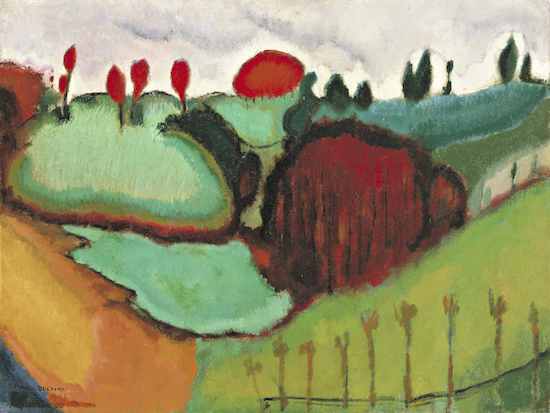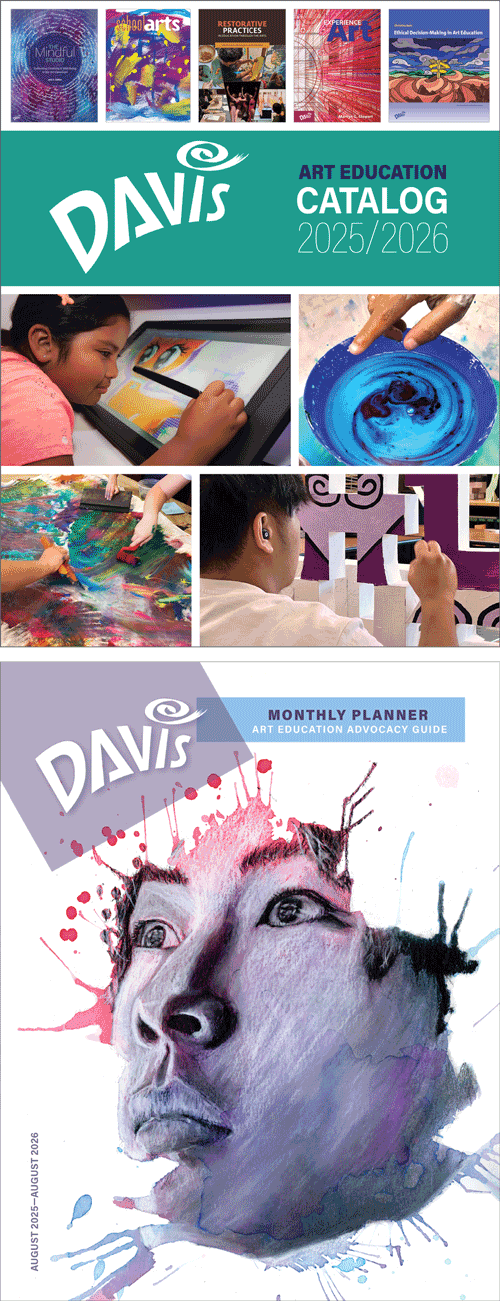Artist Birthday: Marcel Duchamp
Marcel Duchamp matured as an artist during one of the most exciting periods in Western art history. Paris was one of the undisputed leaders in avant-garde experiments in art which had repercussions throughout the Western world and beyond. Known primarily for his Dada and Surrealist body of work, Duchamp began as a inspired painter, interested very much in the restructuring of traditional compositional values.
Artist Birthday for 28 July: Marcel Duchamp (1887–1968, United States, born France)
Marcel Duchamp was a leader in the Dada and Surrealism movements in Western Europe and America.
 |
| Marcel Duchamp, Landscape, 1911. Oil on canvas, 46.3 x 61.3 cm. The Museum of Modern Art, New York. © 2025 Artists Rights Society (ARS), New York. (MOMA-P0250dcars) |
Paris in the early 1900s was the ideal place for Duchamp to become acquainted with modern trends in painting. Duchamp studied Impressionism and Fauvism, and was captivated by new approaches to color and structure. His interest in the progressive efforts in creating a new structure for painting—inspired strongly by the late works of Paul Cézanne (1839–1906)—ultimately, by late in 1911, led him to embrace the radical ideals of Cubism. This vibrant landscape of Neuilly, outside of Paris on the Seine River, displays the brilliant palette of Fauvism, and demonstrates Duchamp's leaning towards Cubism by the sectioning off the elements of the landscape into distinct shapes.
World War I (1914–1918) was the costliest war in human history in terms of destruction and loss of life (over two million). The first art movement to address the horror of the war and the moral questions it posed was Dada. If modern art up to World War I had questioned the traditions of art, Dada questioned the very concept of art itself. Dada mocked the idea of so-called rational thought and the underpinnings of modern society because they had led to the destruction of the war. They swept away the idea of art as a valued physical object, in favor of an irrational art of ideas (writing) and actions (performance).
Dada evolved first in Switzerland (1915–1916) when the war broke out, and in Berlin in 1918. Cabaret Voltaire in Zürich, the gathering place for avant-garde artists disgusted by the war formed the first core of Dada. In the Swiss venue, Dada consisted mostly of performances of poetry and writings in made-up languages. When the Dada movement spread to Germany, it became more of a vehicle for visual arts, particularly those flavored by a propagandistic or political activist agenda.
Duchamp was raised by a painter mother in a family of six children, four of whom were artists. Many of his earliest paintings were landscapes that exhibited an appreciation for the work of Impressionist Claude Monet (1840–1926). In 1904 he moved to Paris to study art. His early work in Paris reflected Impressionist, Post-Impressionist, and Fauvist influences which he gradually abandoned, not wanting to follow the traditional idea of an artist and an identifiable style. He became strongly influenced by the mystical work of Symbolist Odilon Redon (1840–1916) and its vagaries about sexuality and the physical world.
The greatest impact on his reassessment of fine art came after seeing Raymond Roussel's absurdist theater play Impressions of Africa, that was full of non-sequiturs, nonsensical plots and verbal puns. This cross-influence with literature would become a seminal part of the Dada movement.

Comments